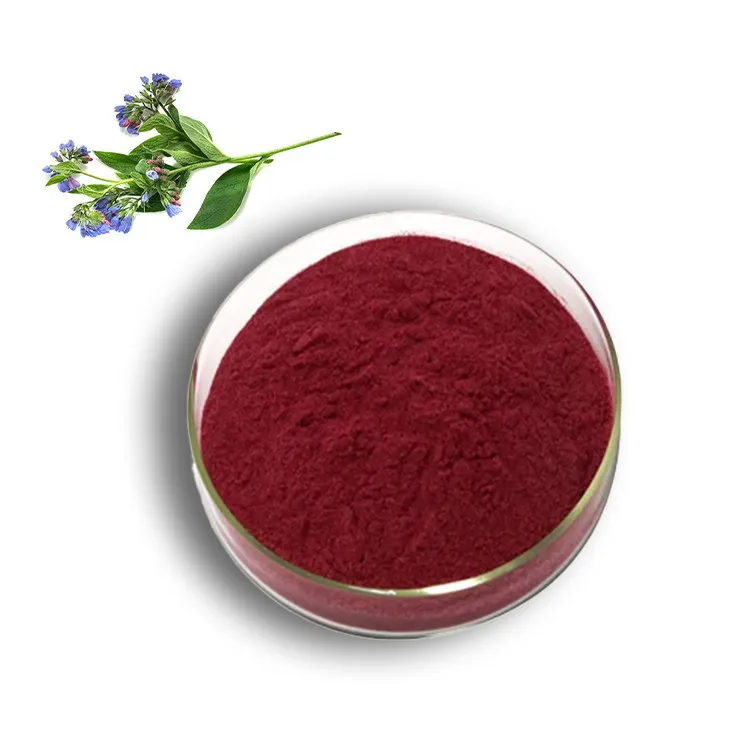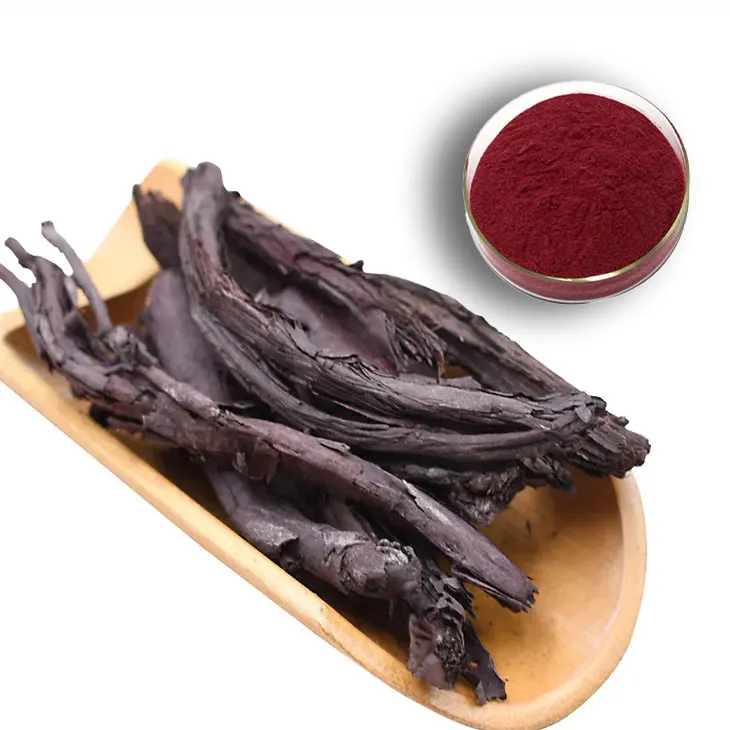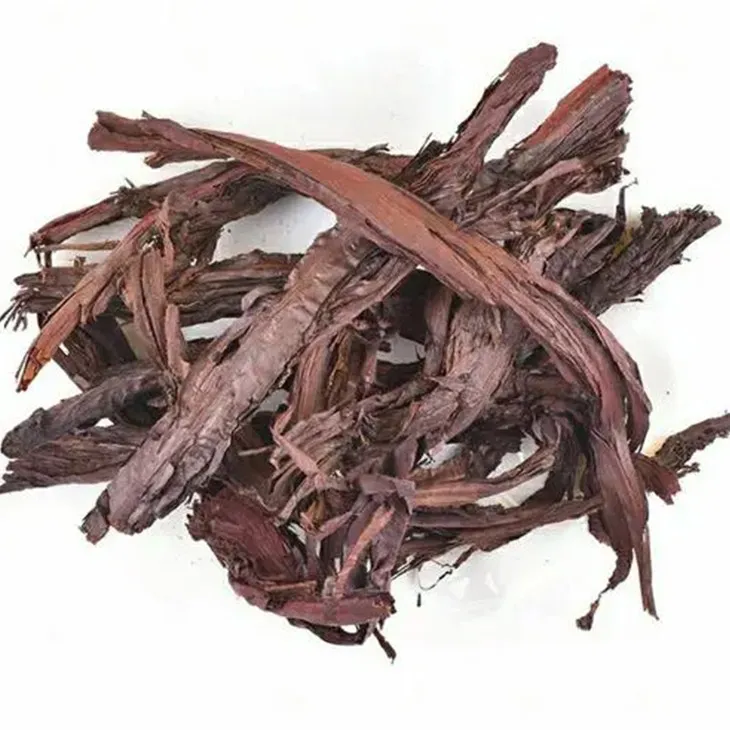- 0086-571-85302990
- sales@greenskybio.com
The best method for extracting shikonin.
2024-11-28

1. Introduction
Shikonin is a natural naphthoquinone pigment with a wide range of biological activities, including anti - inflammatory, antibacterial, and anticancer properties. Due to its significant pharmacological potential, the extraction of Shikonin has attracted increasing attention in recent years. Efficient and high - quality extraction methods are crucial for obtaining Shikonin in sufficient quantities for various applications, such as in the pharmaceutical and cosmetic industries.

2. Solvent Extraction
2.1 Principle
Solvent extraction is one of the most traditional methods for extracting shikonin. It is based on the principle of solubility, where shikonin is dissolved in a suitable solvent. Commonly used solvents include petroleum ether, ethyl acetate, and chloroform. The plant material containing shikonin is soaked or refluxed in the solvent, and then the solvent is evaporated to obtain the shikonin extract.
2.2 Advantages
- It is a relatively simple and easy - to - operate method. Low - cost solvents are often available, making it cost - effective for large - scale extraction.
- It has been widely studied and applied, and there is a large amount of existing experience and data for reference.
2.3 Disadvantages
- The use of organic solvents may pose environmental and safety risks. Some solvents are volatile and flammable, requiring special handling and storage conditions.
- The extraction efficiency may not be very high, and it often requires a long extraction time and multiple extraction steps to obtain a relatively high yield of shikonin.
- The selectivity of solvent extraction is relatively low, and it may extract other impurities along with shikonin, which requires further purification steps.

3. Supercritical Fluid Extraction
3.1 Principle
Supercritical fluid extraction (SFE) utilizes supercritical fluids, typically carbon dioxide (CO₂) in the supercritical state. Supercritical CO₂ has properties between those of a gas and a liquid. It has a high diffusivity like a gas and a high solvating power like a liquid. When the plant material is exposed to supercritical CO₂, shikonin can be selectively dissolved and then separated by adjusting the pressure and temperature conditions.
3.2 Advantages
- It is an environmentally friendly method as CO₂ is non - toxic, non - flammable, and easily available. It does not leave harmful residues, which is very important for applications in the pharmaceutical and food industries.
- The extraction process is relatively fast, and the extraction efficiency is high. It can selectively extract shikonin with good purity, reducing the need for subsequent purification steps.
- The operating conditions, such as pressure and temperature, can be precisely controlled, which allows for fine - tuning of the extraction process to optimize the yield and quality of shikonin.
3.3 Disadvantages
- The equipment for supercritical fluid extraction is relatively expensive, which requires a high initial investment. This limits its application in some small - scale or low - budget extraction operations.
- The complexity of the process requires highly trained operators to ensure proper operation and safety.

4. Microwave - Assisted Extraction
4.1 Principle
Microwave - assisted extraction (MAE) uses microwave energy to heat the plant material and the solvent. Microwaves can cause rapid heating by interacting with the polar molecules in the sample. This rapid heating can increase the mass transfer rate between the plant matrix and the solvent, thereby enhancing the extraction efficiency of shikonin.
4.2 Advantages
- The extraction time is significantly shortened compared to traditional solvent extraction methods. This can save a lot of time in the extraction process, especially for large - scale production.
- The extraction efficiency is relatively high. The use of microwaves can disrupt the cell walls of the plant material more effectively, facilitating the release of shikonin into the solvent.
- It is a relatively energy - efficient method as the microwave energy is directly transferred to the sample, reducing heat loss during the heating process.
4.3 Disadvantages
- The uniformity of microwave heating may be a problem. Uneven heating can lead to inconsistent extraction results in different parts of the sample.
- The equipment for microwave - assisted extraction also requires certain investment, and the selection of appropriate solvents and extraction conditions needs further optimization.
5. Comparison of the Three Extraction Methods
5.1 Efficiency
- Supercritical fluid extraction generally shows high efficiency in terms of extraction time and yield. It can quickly and selectively extract shikonin with relatively high purity.
- Microwave - assisted extraction also has a relatively high extraction efficiency, especially in terms of shortening the extraction time. However, its purity may be slightly lower than that of supercritical fluid extraction.
- Solvent extraction has the lowest efficiency among the three methods. It often requires long extraction times and multiple extraction steps to achieve a relatively satisfactory yield.
5.2 Environmental and Safety Aspects
- Supercritical fluid extraction is the most environmentally friendly method as it uses non - toxic and non - flammable CO₂. It also has high safety during the extraction process.
- Microwave - assisted extraction is relatively safe, but the solvents used may still have some environmental and safety concerns depending on the type of solvent.
- Solvent extraction has the most significant environmental and safety risks due to the use of volatile and flammable organic solvents.
5.3 Cost
- Solvent extraction has the lowest initial cost as the solvents and equipment are relatively inexpensive. However, considering the long extraction time and possible purification costs, the overall cost may not be as low as expected.
- Microwave - assisted extraction requires an investment in microwave equipment, but its relatively short extraction time can reduce the overall cost to some extent.
- Supercritical fluid extraction has the highest initial cost due to the expensive equipment. However, its high efficiency and reduced need for purification can offset the high initial investment in the long run.
6. Conclusion
Each of the three extraction methods, solvent extraction, supercritical fluid extraction, and microwave - assisted extraction, has its own advantages and disadvantages. The choice of the best method for extracting shikonin depends on various factors, such as the scale of production, cost considerations, environmental requirements, and the desired purity of the final product. For small - scale and low - budget operations, solvent extraction may still be a viable option despite its lower efficiency. For large - scale industrial production with high environmental and quality requirements, supercritical fluid extraction may be the most suitable method. Microwave - assisted extraction can be a good compromise between cost and efficiency for medium - scale production. In the future, further research and development are expected to improve the existing extraction methods and explore new methods to meet the growing demand for shikonin extraction more effectively.
FAQ:
What are the main extraction techniques for shikonin?
The main extraction techniques for shikonin include solvent extraction, supercritical fluid extraction, and microwave - assisted extraction.
What are the advantages of solvent extraction for shikonin?
Solvent extraction is a relatively traditional and widely used method. One of its advantages is that it can be carried out with relatively simple equipment. It also has a certain degree of selectivity depending on the solvents used. However, it may have issues such as the use of large amounts of solvents, which may be harmful and require subsequent solvent removal steps.
What are the benefits of supercritical fluid extraction in shikonin extraction?
Supercritical fluid extraction offers several benefits. It can operate at relatively mild conditions, which helps to preserve the integrity of shikonin. It also has good selectivity and can produce high - purity shikonin. Moreover, the supercritical fluid can be easily removed, leaving little or no residue compared to traditional solvents.
How does microwave - assisted extraction work for shikonin?
Microwave - assisted extraction uses microwave energy to heat the sample and the solvent rapidly. This rapid heating can enhance the mass transfer rate, making the extraction process faster. It can also potentially improve the extraction efficiency by disrupting the cell walls of the plant material containing shikonin more effectively.
Which extraction method is the most cost - effective for shikonin?
The cost - effectiveness of each extraction method depends on various factors. Solvent extraction may be relatively cost - effective in terms of initial equipment investment but may incur high costs in solvent purchase and disposal. Supercritical fluid extraction equipment is often more expensive, but it may save costs in the long run due to high - quality product yield and less waste. Microwave - assisted extraction equipment also has an initial cost, and the overall cost - effectiveness also needs to consider factors such as energy consumption and extraction yield.
Related literature
- Optimization of Shikonin Extraction: A Review
- Comparative Study on Different Extraction Methods of Shikonin and Their Effects on Product Quality
- Recent Advances in Shikonin Extraction Technologies
- ▶ Hesperidin
- ▶ citrus bioflavonoids
- ▶ plant extract
- ▶ lycopene
- ▶ Diosmin
- ▶ Grape seed extract
- ▶ Sea buckthorn Juice Powder
- ▶ Beetroot powder
- ▶ Hops Extract
- ▶ Artichoke Extract
- ▶ Reishi mushroom extract
- ▶ Astaxanthin
- ▶ Green Tea Extract
- ▶ Curcumin Extract
- ▶ Horse Chestnut Extract
- ▶ Other Problems
- ▶ Boswellia Serrata Extract
- ▶ Resveratrol Extract
- ▶ Marigold Extract
- ▶ Grape Leaf Extract
- ▶ blog3
- ▶ blog4
-
The Best Method for Extracting Vitamin D3.
2024-11-28
-
Chinese Lycopene Powder Factories.
2024-11-28
-
Chinese konjac powder factory.
2024-11-28
-
The Most Worth - Buying Lily Extract Brands.
2024-11-28
-
The best pitaya powder on the market.
2024-11-28
-
Optimal Bioavailability of Feverfew Extract.
2024-11-28
-
Bulk purchase of orange - flavored powder.
2024-11-28
-
Purple Sweet Potato Extract
2024-11-28
-
Angelica sinensis extract
2024-11-28
-
Scutellaria Extract
2024-11-28
-
Mangosteen extract powder
2024-11-28
-
Feverfew Extract
2024-11-28
-
Grapefruit Seed Extract Powder
2024-11-28
-
Epimedium extract powder
2024-11-28
-
Aminolevulinic acid
2024-11-28
-
Citrus bioflavonoids
2024-11-28
-
Hawthorn powder
2024-11-28





















